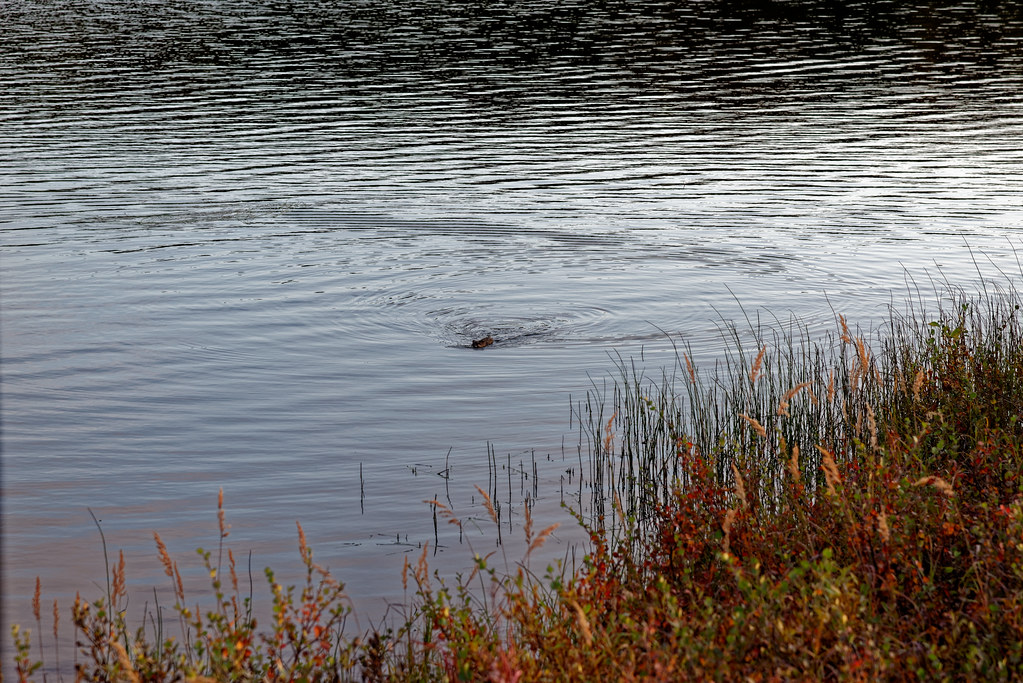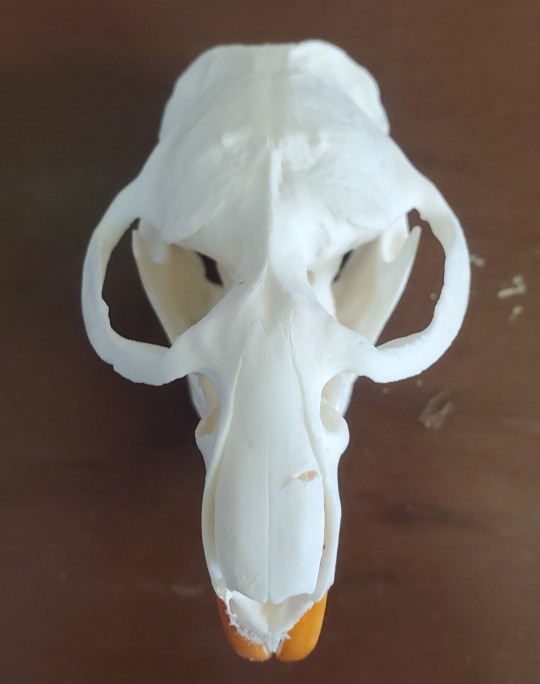#Ondatra zibethicus
Text

A muskrat (Ondatra zibethicus) chews on a water reed in Nome, Alaska, USA
by marlin harms
#muskrat#rodents#ondatra zibethicus#ondatra#Cricetidae#rodentia#mammalia#chordata#wildlife: usa#wildlife: north america
140 notes
·
View notes
Video
A Muskrat “Enjoying” a Morning Swim on a Nearby Kettle Pond in Denali National Park & Preserve by Mark Stevens
Via Flickr:
While on a bus ride from the North Face Lodge along the main park road in Denali National Park & Preserve. This was a view looking to the northeast not too far after passing Wonder Lake.
#Alaska 2019#Alaska Range#Alaska-Yukon Ranges#Azimuth 31#Bus Ride from North Face Lodge#Day 11#Denali National Park#Denali National Park & Preserve#Denali National Park Rd#Denali National Park and Preserve#DxO PhotoLab 3 Edited#Image Capture With Arsenal#Kettle Pond#Lake#Landscape#Landscape - Scenery#Looking NE#Muskrat#Nature#Nikon D800E#No People#Ondatra zibethicus#Outside#Pond#Project365#Scenery - Nature#Semiaquatic Rodent#Swimming#Tundra#West-Central Alaska Range
1 note
·
View note
Text

Muskrat (Ondatra zibethicus) a semi-aquatic rodent native to North America (and introduced & invasive in parts of Europe and Asia). Their name possibly derives from muscascus, an Algonquian word meaning "it is red."
#id in alt#muskrat#your suggestions#thank you cafe-araignee!#godspeed to the muskrat your team rehabbed!! that's so cool#animals#digital art#illustration#wildlife
141 notes
·
View notes
Text
detroit become human rat

musk/10
This one took me on a complete trip. That's not a rat a la Rattus norvegicus, that's probably Ondatra zibethicus-- a muskrat. They are apparently also traditionally eaten by Catholics in the greater Detroit/Michigan area around lent. Ralph is simply being considerate of dietary restrictions, apparently. ...maybe don't ask about the state of the muskrat or meal, though.

(muskrat for comparison)
57 notes
·
View notes
Text
Preliminaries

Information about contestants below!
Nutria or coypu (Myocastor coypus)
Nutria is a large, herbivorous, semiaquatic rodent. It lives in burrows alongside stretches of water and feeds on river plant stems. It somewhat resembles a very large rat, or a beaver with a small, long and skinny hairless tail. Three distinguishing features are a white patch on the muzzle, webbed hind feet, and large, bright orange-yellow incisors.
Nutria are found most commonly in freshwater marshes and wetlands. They either construct their own burrows, or occupy burrows abandoned by other animals. They are also capable of constructing floating rafts out of vegetation. Nutria live in partially underwater dens. One male will share a den with three or four females and their offspring.
Nutria can live up to six years in captivity, but individuals uncommonly live past three years old. It is considered an invasive species in Europe.
Desmarest's hutia or Cuban hutia (Capromys pilorides)
It is the largest living hutia. It has thick, coarse fur which extends to the tip of the tail. The colour of the body fur varies from black to brown, with a light sand colour and red also seen.
The Desmarest's hutia is found only in Cuba, but is widespread throughout its range. In northern Cuba, populations tend to be centred on areas where there are abundant mangroves, while southern populations tend to favour a more terrestrial habitat.
Desmarest's hutias normally live in pairs, but can be found individually or in small groups. They are diurnal and do not burrow, so during the night they rest in hollows in rocks or trees. They are omnivorous but eat mostly bark, leaves and fruit. In captivity they live for eight to eleven years.
Muskrat (Ondatra zibethicus)
They are covered with short, thick fur of medium to dark brown color. They have long tails covered with scales. To aid in swimming, their tails are slightly flattened vertically, a shape that is unique to them. Muskrats spend most of their time in the water and can swim underwater for 12 to 17 minutes.
The muskrat mostly inhabit wetlands. They live in families, consisting of a male and female pair and their young. They build nests that are often burrowed into the bank with an underwater entrance. Muskrats feed mostly on cattail and other aquatic vegetation but also eat small animals.
Their bodies, like those of seals and whales, are less sensitive to the buildup of carbon dioxide than those of most other mammals. They can close off their ears to keep water out. In some European countries the muskrat is considered an invasive species.
19 notes
·
View notes
Note
Ding dong I’m popping in here to ask if you’d be open to sharing your fakemon ideas? (Referencing ur latest post about it)
sure! all of the ones I've made are for a fan region so there's a lot. (15 page google doc and I'm nowhere near done save me) so for the sake of my sanity and also so this post isn't excruciatingly long I'll just share the starters and a trio that is very important to me for now and I'll probably share more later
Starters:
Fire Starter:
Based on Goats (mostly)
First: Goatinder (Fire) [The Fire Goat Pokémon]
(Name Origin: Goat + Tinder)
(vague design concept: baby goat + fire. It needn’t be more complicated.)
Middle: Embilly (Fire) [The Fire Goat Pokémon]
(Name Origin: Ember + Billy)
(vague design concept: older goat + MORE fire)
Last: Lavaries (Fire/Rock) [The Constellation Pokémon]
(Name Origin: Lava + Aries)
(vague design concept: Ram (rams are sheep but if a fish can evolve into an octopus i can do as i please) + who woulda guessed, fire. Also stars.)
Water Starter:
Based on Muskrats + Stereotypical Surfers & Skaters
(all of these names have something to do with the scientific name for a muskrat: Ondatra zibethicus)
First: Gromithicus (Water) [The Floatie Pokémon]
(Name Origin: Grom (Young/Inexperienced surfer/skater) + scientific name)
(vague design concept: muskrat that is a baby who has its tail wrapped around it (made out of water) like an innertube. His tail is an innertube. Baby.)
Middle: Ziboarder (Water/Ground) [The Skating Pokémon]
(Name Origin: Scientific Name + boarder)
(vague design concept: muskrat that is a teenager that uses its tail like a skateboard)
Last: Ondatow (Water/Ground) [The Surf n Turf Pokémon]
(Name Origin: Scientific name + undertow) (this name is so important to me)
(vague design concept: adult muskrat that’s going full stereotypical surfer bro. Uses its tail as a surfboard and skateboard)
Grass Starter:
(based on moose and mint)
(i don’t really have design concepts in my head for these guys yet)
First: Herbidae (Grass) [The Herb Moose Pokémon]
(Name Origin: Herb + Cervidae (family moose are from))
Middle: Menthantler (Grass/Ice) [The Mint Moose Pokémon]
(Name Origin: Menthol + Antler)
Last: Alcespear (Grass/Ice) [The Menthol Pokémon]
(Name Origin: Scientific name Alces Alces + Spearmint)
Exclamation Trio:
1. Based on Possums
Possdout - (Normal) [The Possum Pokemon]
(Name Origin: Possum + Passed Out)
(vague design concept: pousm :D it’s a possum. And that’s all it needs to be.)
Impossumable - (Normal/Ghost) [The Play Dead Pokemon]
(Name Origin: Impossible + possum)
(vague design concept: imagine how mother possums carry their babies on their backs except spirits instead.)
(unfinished) Dex Entry- It has become so skilled at playing dead, that it attracts spirits to cling onto its back.
2. Based on moles
{pre evolution that i'm not sure about} (Normal) [The Mole Pokémon]
Holeymoley - (Normal/Fairy)
(Name Origin: Holy Moly + mole)
(very much a vague concept right now but they are very important to me)
3. Based on raccoons
Racoonfetti - (Normal) [The Raccoon Pokémon ]
(Name Origin: Racoon + Confetti)
Coongrats - (Normal/Dark)
(Name Origin: Racoon + Congrats)
(also a vague concept but very important)
#pokemon#fakemon#ondatow is the raddest pokemon ever#impossumable is so important to me#there are so so many more of these freaks in my brain
6 notes
·
View notes
Text
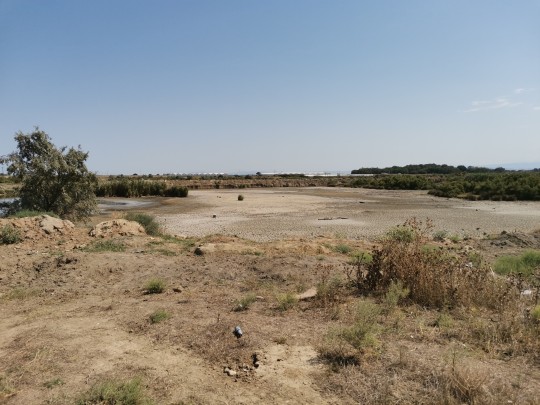



Recently I went to the lake with which I have many memories from my childhood, what I saw shocked me. Once this lake was large and full-flowing, but now a pathetic puddle has remained from it, and all for the sake of human selfishness, most likely the water from this lake went to watering plants in greenhouses that are visible in the photo. Previously, there were a lot of different types of animals in this lake: birds, fish, amphibians and mammals such as Ondatra (Ondatra zibethicus is the name in Latin). Was there really no other way?
2 notes
·
View notes
Photo
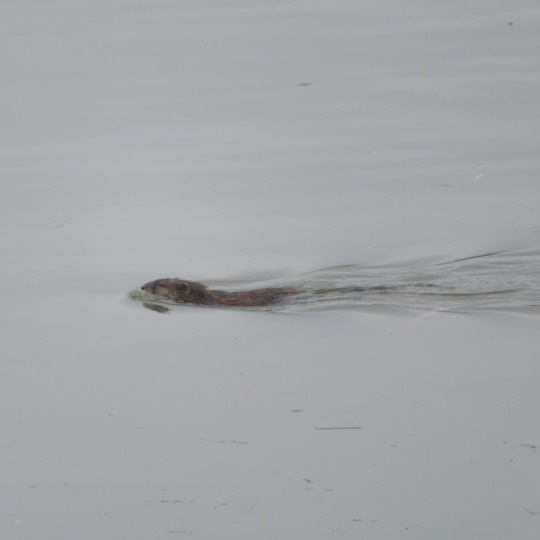
Bisam, Bisamratte | Muskrat
Ondatra zibethicus
1 note
·
View note
Text
Lol I have been introduced to an iNaturalist meme. It's not quite midnight yet, but happy birthday, Gerald the muskrat.
Warning: this page will probably take a while to load. It has...I don't know how many comments and IDs. I do not recommend opening this on an old device or it might just crash.
1 note
·
View note
Text

Muskrat (Ondatra zibethicus)
Photo by Gabi Cuff
#muskrat#ondatra zibethicus#ondatra#ondatrini#arvicolinae#cricetidae#muroidea#myomorpha#rodentia#glires#gliriformes#euarchontoglires#boreoeutheria#eutheria#mammalia#tetrapoda#vertebrata#chordata
205 notes
·
View notes
Video
From the archives
Via Flickr:
Muskrat (Ondatra zibethicus) at Nisqually National Wildlife Refuge
#Animal#Billy Frank Jr. Nisqually National Wildlife Refuge#Mammal#Muskrat#Ondatra zibethicus#Rodent#Thurston County#Washington
1 note
·
View note
Photo

Common Muskrat (Ondatra zibethicus) in Badlands National Park, South Dakota.
Shot on a Nikon D500 with a VR 300mm f/2.8G lens.
#common muskrat#ondatra zibethicus#Badlands National Park#south dakota#photography#nature photography#photographers on tumblr#original photography#nature#animals of tumblr#animals#animal#wildlife#wildlife photography#usa#nikon#nikon d500#jeffreyjangphotography
4 notes
·
View notes
Text

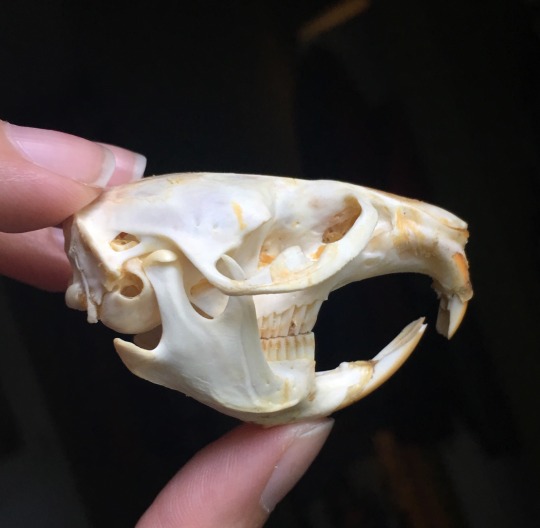
✨Muskrat, Ondatra zibethicus, skull ✨
#vulture culture#vulturecore#skull#vulture#gremlincore#raccoon skull#send me skulls pls#skulls#skull collecting#bone#bone collecting#Ondatra zibethicus#muskrat#muskrat skull#muskrat skulls#muskrats#muskrat bone skulls#i love bones#i love skulls#hes so fricken cute#someone send me slulls please please#does anyone have skulls for sale?
104 notes
·
View notes
Photo

Muskrat (Ondatra zibethicus). Horicon National Wildlife Refuge, Wisconsin.
60 notes
·
View notes
Photo

Muskrat (via USFWS Midwest Region)
Muskrats can sometimes become so abundant that they cause an "eat-out" to occur. The pile of muskrats in this picture caused an eat-out on the small wetland they lived in by eating all of the cattails and bullrushes within the wetland. The only thing left was a mound of dead vegetation to sit on.
Photo by Alex Galt/USFWS.
#Muskrat#Ondatra zibethicus#Ondatra#Ondatrini#Arvicolinae#Cricetidae#Rodentia#Mammalia#mammal#wetlands#ecology#Morris Wetland Management District#Minnesota
12 notes
·
View notes
